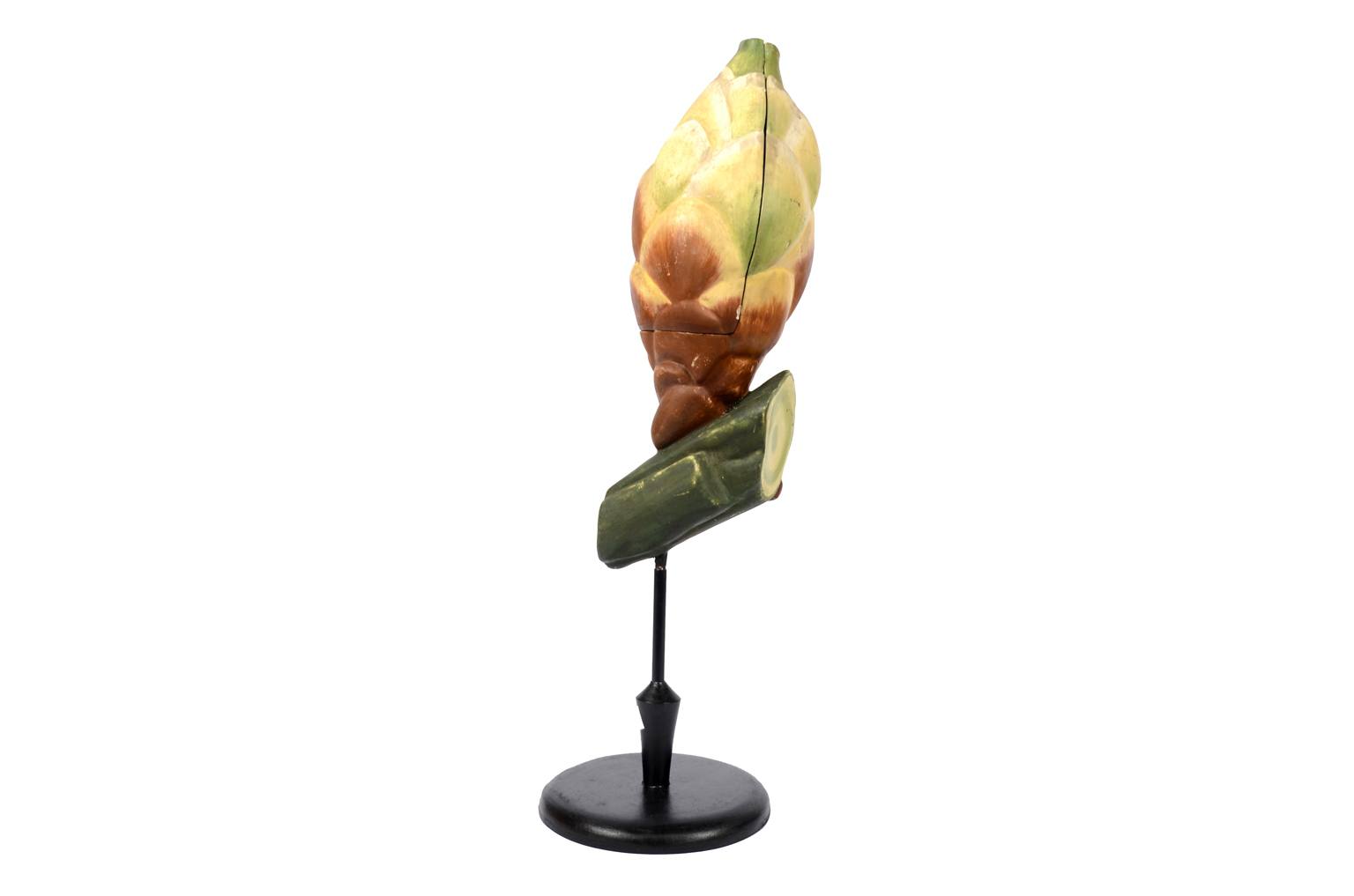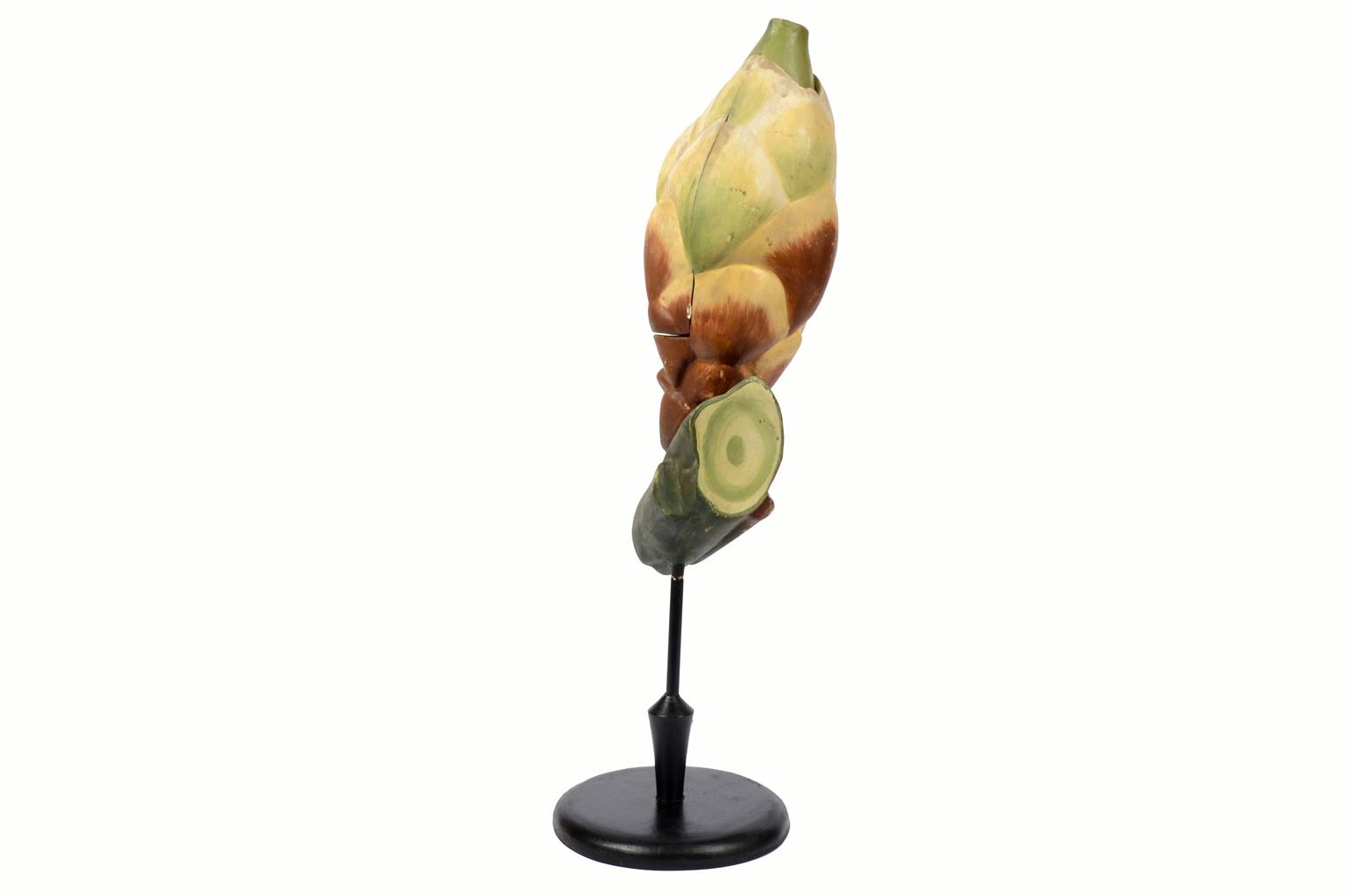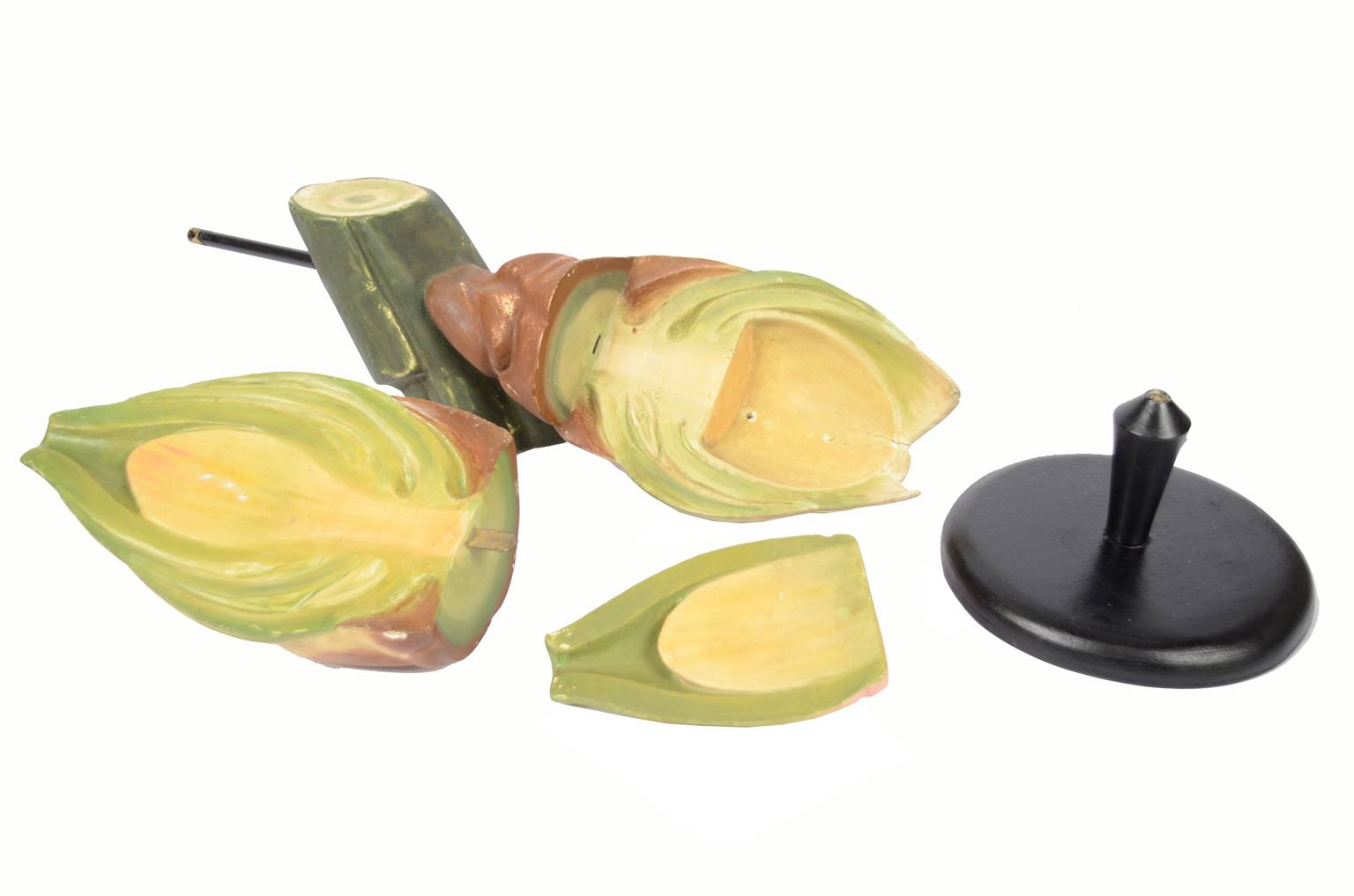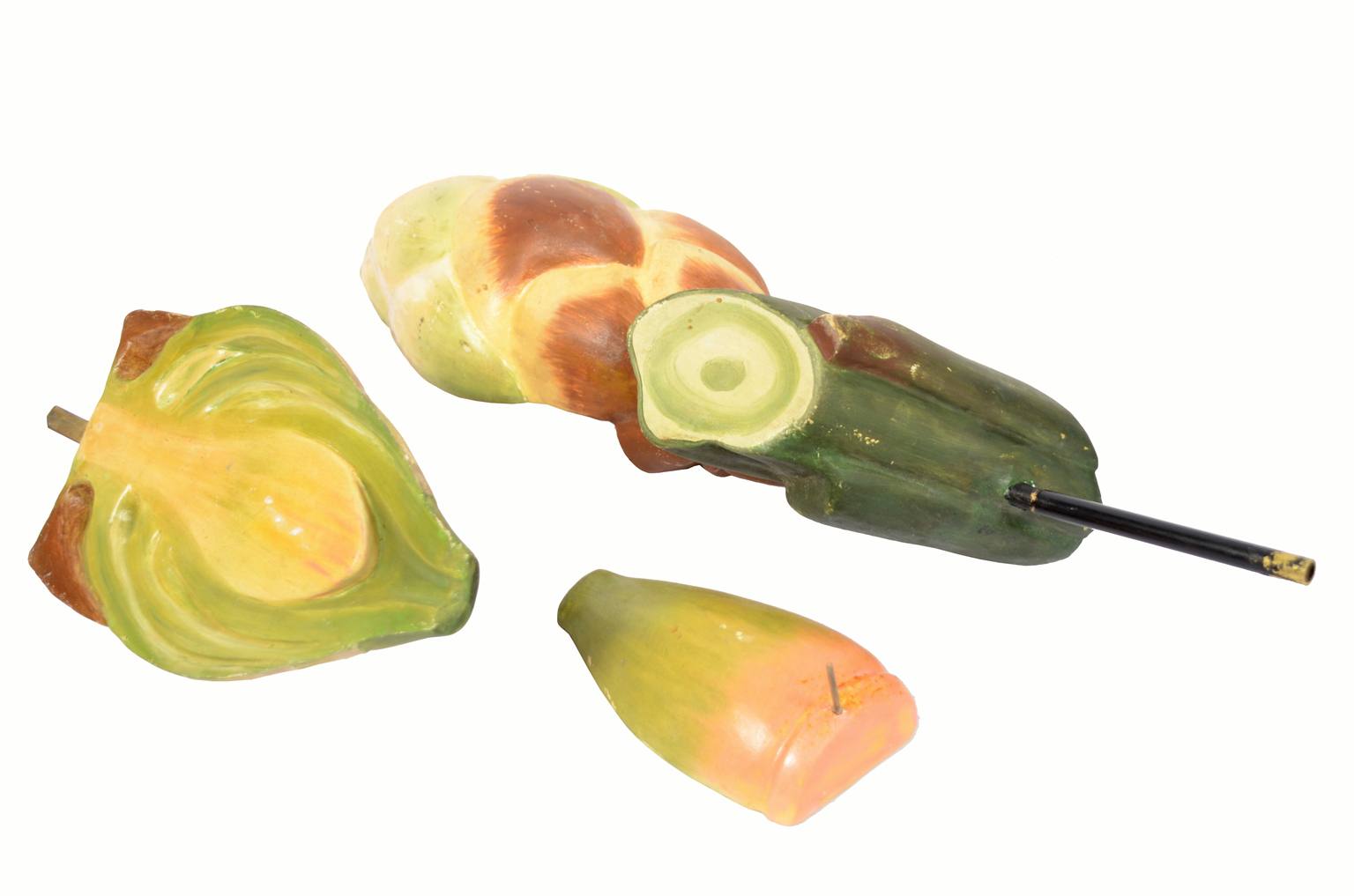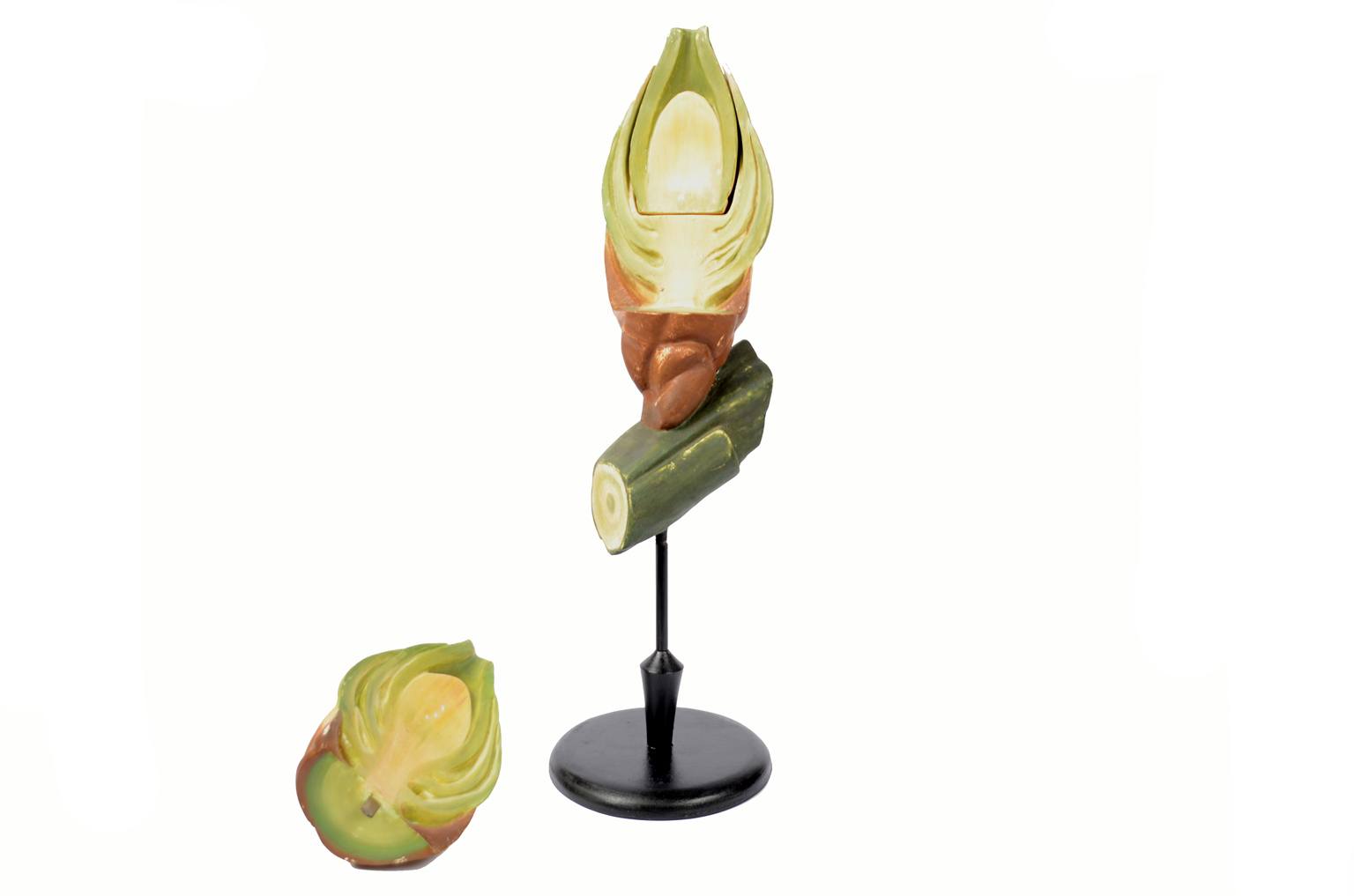antik.it/Natural-history/6027-Yew-seed/
Code 6027
EUR 1000.00
In stock
1517406265Code 6027 Yew seedYew seed (Taxus baccata), enlarged and removable didactic model of the seed of the badger, tree very used as hedge, belonging to the order of the conifers. German manufacture of the twenties in papier-mâché painted by hand and mounted on an ebonized wooden base. Height 58 cm - 22.8 inches, base diameter 17 cm - 6.69 inches. Good condition.
The yew (Taxus baccata L., 1753) is a tree of the order of conifers, widely used both as an ornamental hedge and as an isolated pruned plant.
The yew is an evergreen tree that reaches between 10 and 20 meters in height, with a very slow growth; for this reason, in nature, it often occurs in the form of a small tree or a shrub; the crown has an irregular globular shape, and has very low branches.
The plant, being a Pinophyta, does not produce fruit: those that look like fruits are actually arils, that is, the fleshy excrescences that cover the seed.
The birds eat these arils and digest the pulp, while the real seeds manage to cross the digestive process intact and, once expelled, settle in the ground giving rise to a new specimen, contributing to the spread of the tree itself.
FAQ
Do you provide an authenticity certificate/expertise?
Of course! The legislative decree n. 42/2004 stipulates that who sells works of art or historical and archaeological items has the obligation to deliver to the purchaser the documents attesting to the authenticity of the object, or at least to submit the documents relating to the probable attribution and origin. Antik Arte & Scienza provides an expertise (as warranty) that contains a description, period and assignment or the author, if known, of the item.
How can I pay?
Secure payments by PayPal, credit card or bank transfer.
What are the shipping terms and the delivery schedule?
Shipping by DHL or UPS is free (but if we are shipping to a country non-EU remember that any taxes and customs duties are on your expense), and items will be sent just after receiving of payment.
Italy: delivering on the average in 24 h.
Europe: delivering on the average in 2/3 weekdays.
Other countries: delivering on the average in 5 weekdays; custom duties charged to the buyer.
Is shipping insured?
Of course! Free insurance by Lloyd's London that covers almost all destinations.
If I change my mind, can I return the item?
Of course! (see our general terms for more information).
e-Shop
Natural history
Code 6027 Yew seed
Antik Arte & Scienza sas di Daniela Giorgi - via S. Giovanni sul Muro 10 20121 Milan (MI) Italy - +39 0286461448 - info@antik.it - www.antik.it - Monday-Saturday: 10am-7pm


